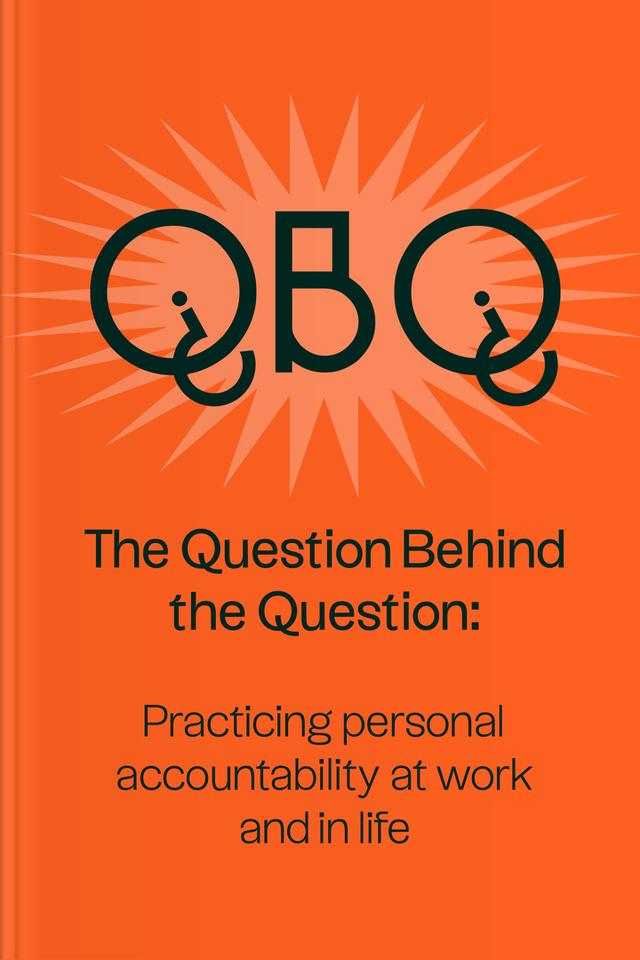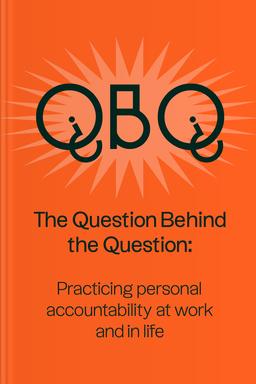You’ll learn
- The pitfalls of asking “When”
- Why “thinking inside the box” is beneficial
- How to avoid a culture of defensiveness at work
- About fertile soil for innovations
russia has launched a full-scale war in Ukraine. Donate to support Ukraine and protect the world’s peace.

first KEY POINT
Imagine walking into a lively restaurant during rush hour, stomach growling in anticipation. You snag a seat at the bar, the staff bustling about. Despite the chaos, a waiter spots you, a newcomer in need.With a quick conversation, you order what you believe is a simple request: a salad, rolls, and a Diet Coke. But there's a hitch — they don't serve this soft drink. Yet, before you can process this, a chilled Diet Coke is in front of you. How? The manager fetched it from the grocery store on the waiter's initiative.This story isn't about your beverage preference. It embodies a mindset that we all yearn for — personal accountability. This waiter could have easily thought, “Why is this my problem?” or “Who's in charge of the menu?” Instead, he showcased a proactive approach, a refreshing shift from the all-too-common blame game we often witness today.
We live in a time where the chorus of “It's not my fault” or “It's not my job” echoes loud and clear. Such perspectives stagnate growth, hinder collaboration, and impede progress. But if there's one thing to remember, it's that no dream or project can flourish without personal accountability.Let's move from the restaurant and consider any team environment. We've likely heard, “There's no 'I' in 'team.'” And while that's true, every team is composed of individuals. Each member has the power and potential to embody personal accountability, becoming a catalyst for collective progress. When we harness this perspective, not only do we grow, but we also kindle that spark in those around us.So, are you ready to delve deeper? In the coming moments, you'll explore how the right questions can unlock your potential, reshape your path to success, and elevate those around you. Prepare to be enlightened.
second KEY POINT
Imagine, amidst a bustling workplace, one voice asks, “When will that department finally get it right?” while another chimes in, “Who messed up this time?” These questions shed light on a pervasive issue: the absence of personal accountability.Such a mindset can hold everyone back and often hides behind phrases like “I have to” or “I can't.” Yet the thing is, opting for inaction is a choice, not a necessity. Recognizing and owning these decisions becomes the gateway to transformative experiences.The situation changes with the Question Behind the Question (QBQ) framework — nudging us to rethink those initial, adverse reactions termed Incorrect Questions (IQs). While it's tempting to indulge in IQs that lead to blame or procrastination, we can delve deeper, seeking QBQs that pave the way to constructive outcomes.For instance, rather than grumbling, “Why don't they communicate better?” reframe it as “What can I do to enhance communication?” The latter is not just a question; it's an actionable commitment, steering clear of the blame game and pivoting toward solution-oriented thinking.To cultivate such empowering queries, remember these foundational rules for QBQ:• Initiate with “What” or “How”: Steer clear of the passive and often blame-filled “Why,” “When,” or “Who.”
• Personalize with “I”: Swap the generalized “they,” “we,” or “you” for a more accountable “I.”
• Focus on actionable steps: Ensure the question is rooted in tangible action.However, it's pivotal to understand the essence of QBQ. It's more than simply adhering to these rules. For instance, while “How can I dodge this task?” or “What can I do to make you change?” may comply with the format, they stray from the core of QBQ. Genuine QBQs are inward-looking, inviting personal reflection rather than pointing fingers. Their intent is self-improvement.

Continue reading with Headway app
Continue readingfirst KEY POINT
second KEY POINT
third KEY POINT
fourth KEY POINT
fifth KEY POINT
sixth KEY POINT